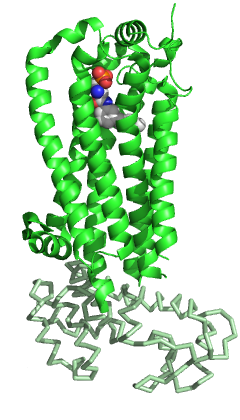Immune cell trafficking
S1P and its receptors play a key role in regulating immune cell trafficking by forming gradients that guide immune cells between tissues and vascular compartments. S1PR1 is pivotal in promoting T-cell egress from lymphoid organs, while changes in S1P levels can influence immune cell migration and positioning in lymphoid and non-lymphoid tissues during inflammation or immune surveillance. [13]
S1PR1, primarily located on the cell membrane of most lymphocytes, binds to the abundant ligand S1P in the bloodstream to promote lymphocyte egress from lymphoid organs, allowing them to travel to affected tissues. S1PR1 is responsive to the S1P gradient between the lymphoid tissues (low S1P) and the lymph (high S1P), facilitating T cell movement through the endothelial barrier. [14] However, upon T cell activation in lymphoid organs via cytokine and T-cell receptor signaling, the protein Cluster of Differentiation 69 (CD69) is expressed and forms a complex with S1PR1. This interaction, involving CD69 transmembrane domain and the helix-4 of S1PR1, leads to S1PR1 internalization and degradation, preventing S1P binding and downstream signaling. [15] This mechanism results in the temporary retention of lymphocytes within the lymph organs, enhancing the chances of successful lymphocyte activation, especially if the initial activation signal was weak. Upon antigen encounter or type I interferon stimulation in lymphoid organs, S1PR1 expression is decreased through CD69 interaction and downregulation of the transcription factor Kruppel‑like factor 2. [16] Effector T cells eventually re-express S1PR1 to exit the lymph node and enter peripheral tissues. However, increased S1P levels in lymphoid tissues, due to inhibition of S1P lyase, inflammation, or synthetic S1PR1 ligands like FTY720, can block T cell egress by dissipating the S1P gradient, inducing S1PR1 internalization, and enhancing endothelial junctional contacts to close egress ports. [16]





